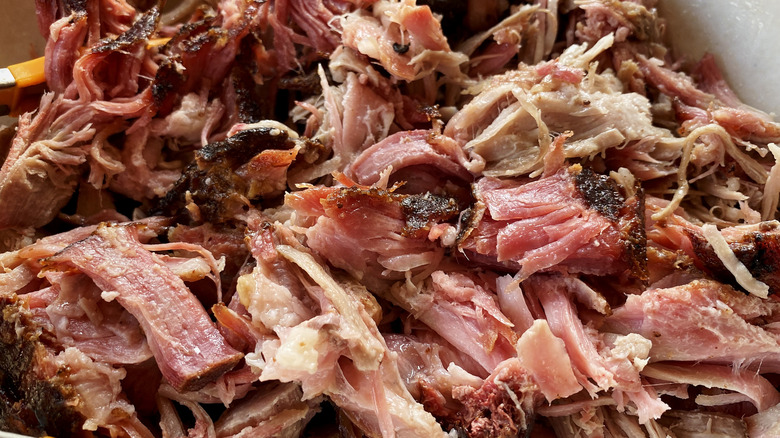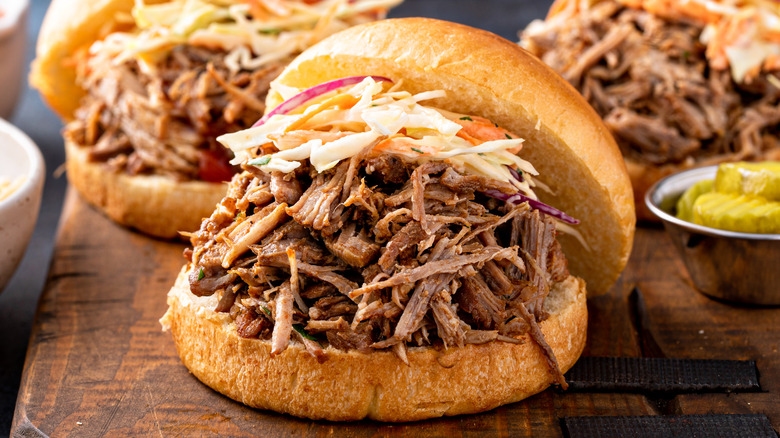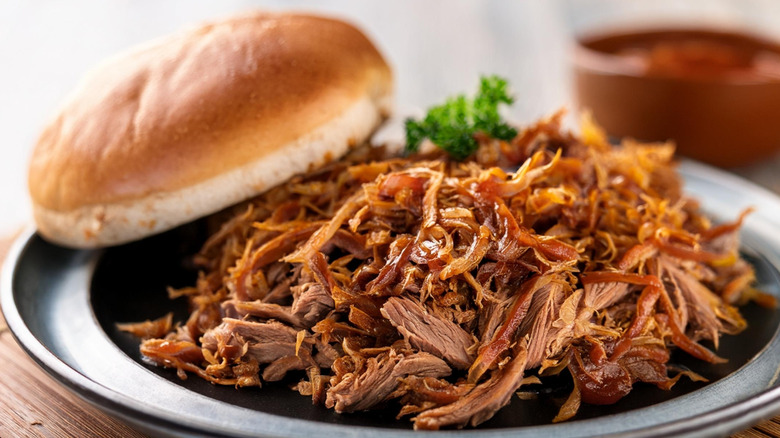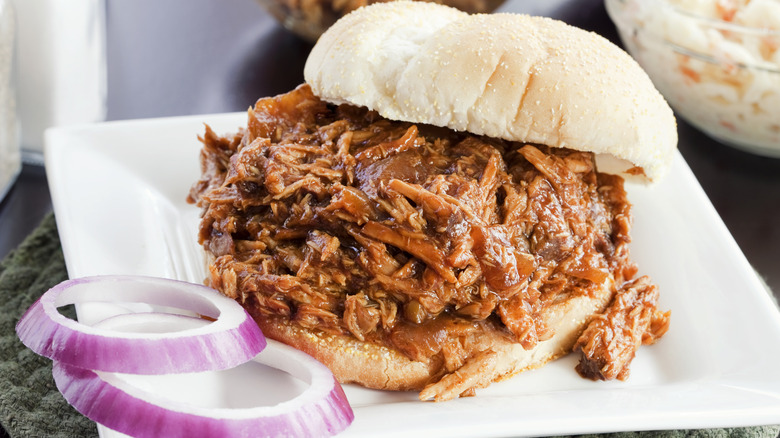The Best Way To Reheat Pulled Pork (Without Drying Out The Sauce)
We may receive a commission on purchases made from links.
If you've got a platter of pulled pork, it's not uncommon for it all to disappear and worry about reheating leftovers can become a moot point. But there are plenty of reasons you might want to get some pulled pork fresh and warm again. If you're going to make pulled pork, it's worth making lots of it; more meat won't take much longer, and economy of scale can be a great benefit. And if you want to cook your pork the day before, you want to be able to serve it like it's hot and fresh. But we've all had that bite of sad, dry pulled pork that has been reheated, and it's just not the same.
There are plenty of tips out there to reheat pulled pork without ending up with that disappointing lack of juice for every bite. Microwaving with a damp paper towel is better than nothing, but it's not a good solution. Heating it in a skillet and leaning into the crispy crunch that results is decent, but it's not the same as moist pulled pork made fresh. But there is actually a perfect solution that will leave you and your guests unable to tell that the pulled pork was made a day or even longer ago, and the trick is down to both how you reheat it and how you store it. You're going to need some plastic and some water.
Storing your pulled pork the right way
The biggest reheated pulled pork sin is having it end up dry. Nobody wants to eat barbeque sauce-flavored shredded cardboard. And the first key to avoiding that is to make sure you store it properly and keep all the juice in the meat. A plastic tub might seem like enough, but the juice can seep out in there and putting it back in isn't easy. For the best results, you need to invest in a vacuum sealer, as that will help to keep all the moisture in the bag ready for when you want to reheat.
For any method of storing pork, you'll keep the meat nice and moist best by not pulling it until you're ready to eat. If you can vacuum seal the pork unpulled, that's great. But it's obviously not always an option. Don't let that stop you, this will still work with pre-pulled pork and it makes it easy to seal it up in individual portions so that you only need to reheat the amount you want to eat at any point. Once the meat is all sealed up, you can put your pulled pork in the fridge for up to 3-4 days or freezer for as much as 2-3 months.
The right way to reheat your pulled pork
For warming your vacuum-sealed pulled pork, you want to forget all your conventional heating devices. Ignore the microwave and the oven. Both will dry your meat out and, importantly, will require you to take the meat out of the bag, leaving some of that precious juice behind before you can heat it up. You need to warm the pulled pork up while it is still in the bag.
For this, you want to turn to a sous vide. If you have an immersion circulator, that's going to be your best friend here. Simply lower the bag of pulled pork into the water, still fully sealed, and set the circulator and come back when it's ready. The meat that you pull out will be steamy, moist, and hot, as if you'd just finished cooking it for the very first time.
Reheating pulled pork without a vacuum sealer or immersion circulator
It's good to know the best practices, but what if you want to reheat pulled pork just once in a while and don't have other uses for a vacuum sealer and immersion circulator? While both can be picked up fairly cheaply, it's still a cost that might be nice to avoid, and it could become additional clutter in your kitchen. But there's a way around all of that.
If you want to sous vide without a vacuum sealer, you can make do with plastic freezer bags. Try to squeeze as much air out as possible. The general principle is the same: it won't be quite as perfect as with a vacuum sealer, but it'll do. If you don't have an immersion circulator, see if any of your other appliances offer sous vide options and follow the recommended instructions for that appliance (you might be surprised by your instant pot settings). Failing that, you can just use a pan of hot water maintained at a low heat.



